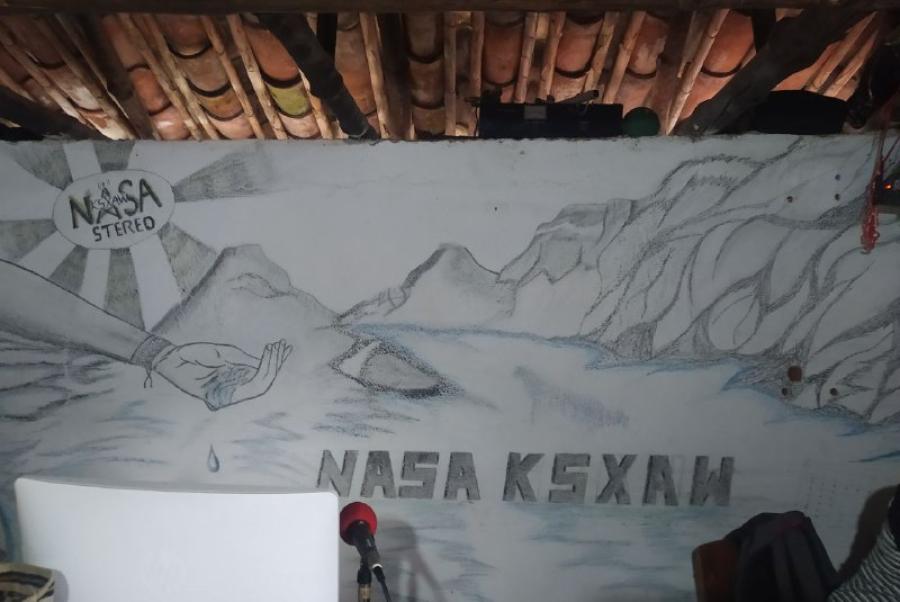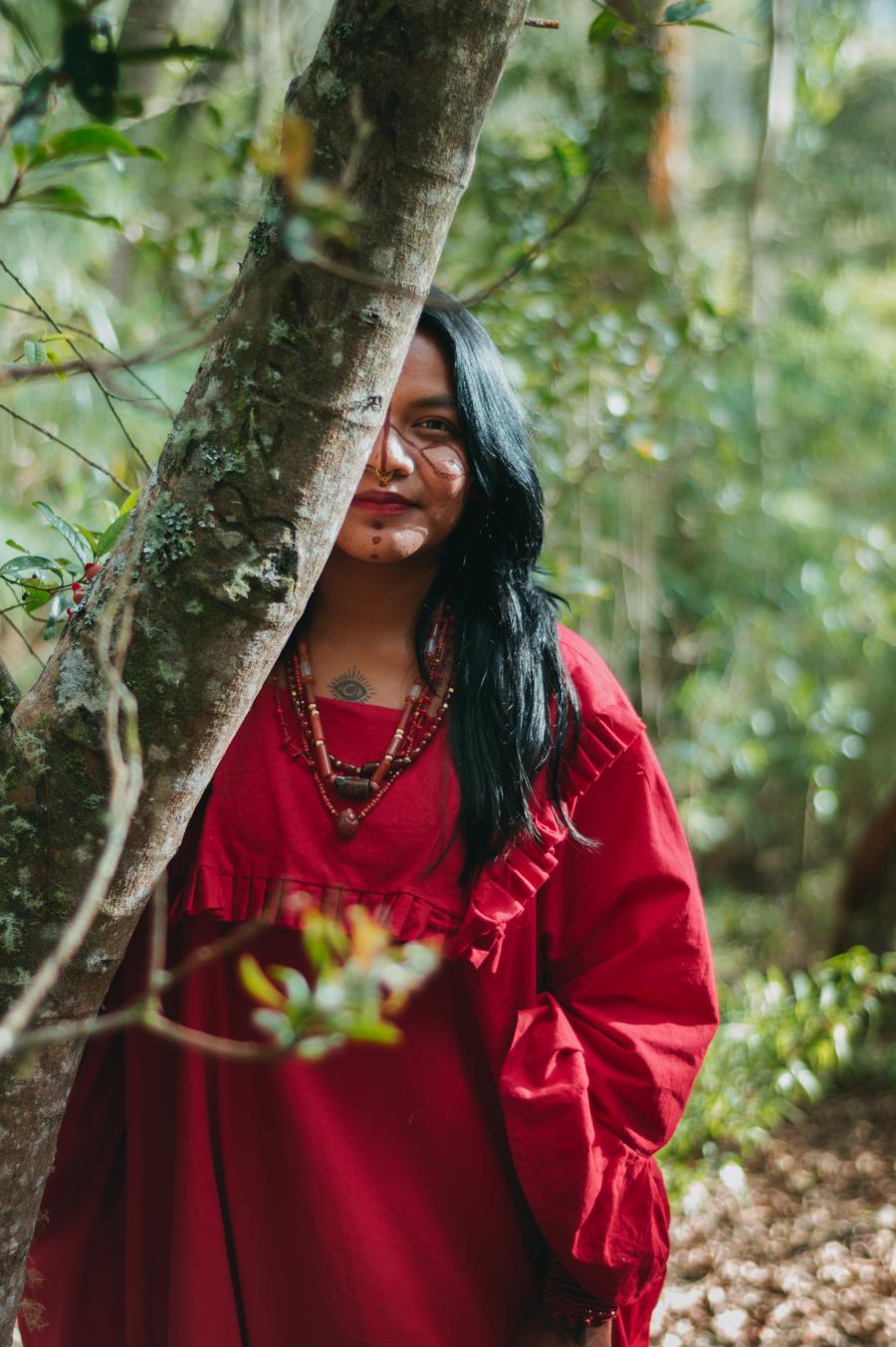Location, Land, and Climate
The Makuna, 600 people strong, live the Colombia's Vaupes region, near the headwaters of the Comena River close to Brazil. In this part of the Amazonian rain forest, humidity and temperature are highall year. The neighboring Maku and Tukano speak similar languages. Other surrounding peoples are the Banyanin, Tutuyi, Tanimuka, and Yauna. The latter two are traditional enemies of the Makuna.
Livelihood
The Makuna support themselves by hunting, gathering, and slash-and-burn agriculture. Most land is communally owned, and clan affiliation determines what is allocated to whom. The Makuna cultivate manioc, vegetables, coca and tobacco. The men clear the forest, and the women plant, cultivate, and harvest all crops except the ritually important ones: tobacco and coca.
Certain types of food gathering, such as termite catching, are undertaken as a group, but the men and initiated boys hunt and fish. The Makuna use canoes and have an elaborate fishing technology. They eat many fish, although some species are taboo to particular clans. Makuna hunt tapir, puma, and ocelot for meat, again except when proscribed by individual or clan taboos.
Many Makuna maintain traditional lifestyles, but many now pursue other livelihoods. The Makuna sometimes trade skins and manioc flour for such goods as clothing, fishing line and hooks, axes, metal pots, and other tools. Nontraditional activities include working for rubber tappers, largely as forced labor, or producing coca for white middlemen and patrons. Some young Makuna men have been lured to new gold-mining operations in the region.
Cultural Systems
The Makuna view themselves as a group of clans united by intermarriage. Traditionally, each clan inhabited a long house - maloca - with its own headman. since the early 1970s, a new political order has been superimposed on this social structure. Now each village has a headman, a teacher, and a catequista, who performs a simple Catholic ceremony of Sundays. The headmen continue their traditional influence, but now they also mediate between the villages and white authorities.
Makuna religion is a kind of ecosophy. They consider saltlicks and fish-spawning places to be sacred, and their shamans carefully mediate the reciprocity among humans, fish, and game animals to keep it in balance. Traditionally, therefore, Makuna managed their environment and did not plnder it.
In Makuna cosmology, the world is periodically destroyed. Many believe that such destruction is underway now and there will soon be no room for the Makuna. This fear is aggravated by the gold-mining operations dismantling some hills near the headwaters of the Comena, a catastrophic development since the Makuna believe these hills are their ancestors holding up the world. Furthermore, gold is the light necessary for the vision of the shamans; removing the gold means the shamans will no longer see visions or foretell the future.
Makuna shamans attribute healing mainly to the power of words and thoughts, rather than to medicinal plants. Words and thinking can also change the course of events, such as heading off guerrilla incursions.
SUGGESTED READINGS
Kaj Arhem, Makuna: Portrait of a Culture, forthcoming.
Adrian Forsyth, Portraits of the Rainforest, Camden House, 1990.
Alfred Russel Wallace, A Narrative of Travels on the Amazon and Rio Negro, Ward, Lock, 1953.
SUPPORT ORGANIZATIONS
National Indigenous Organization of Colombia, Apartado Aereo 32395, Bogota, Colombia.
Coordinating Committee of the Amazon Basin, Jiron Almagro 614, Lima 11, Peru
Current Problems
The Makuna face threats to their lifestyles and their cosmology. Gold mining not only threatens the Makuna's sense of consmological well-being, but also the traditional livelihood by the indiscriminate cutting of forest, polluting of rivers, and killing of fish. Other secular threats come from the cocaine industry. Involvement with cocaine dealers has brought money into Makuna society, and with it economic differentiation. Similarly, traders bring goods and also indebtedness, and some Makuna have been forced into a state of debt bondage. In the past, rubber hunters kidnapped Makuna and used them as forced labor.
Since the 1970s, the Catholic Church has supported extensive missionary activities, as the name of the Makuna village of Santa Isabel suggests. Under Catholic influence, Makuna are abandoning the longhouse for individual homes, weakening the ties of clan membership and reciprocity. Also, education in Catholic schools teaches the children to ignore food and ecological taboos. Other religious groups have proselytized among the Makuna, though with less effect.
Missionary work is not always unchallenged. One head man sends only alternate sons to Catholic schools. He trains the others in traditional beliefs and wants a teacher for the village. If the children can go to school in their own village, he believes, they will be less likely to lose traditional values. Recently, major rituals such as the Spirit Dance have been held more often as the Makuna consciously attempt to reemphasize their cosmology and culture.
Article copyright Cultural Survival, Inc.



